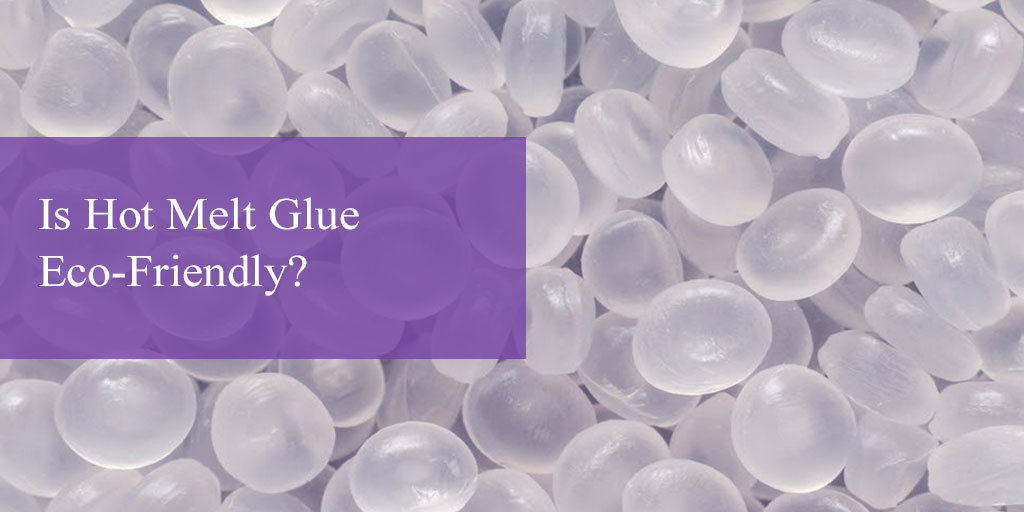As companies become more environmentally conscious, we’ve been getting a lot of questions about different types of glue and their impact on the environment. One of the most common questions we get is if hot melt glue is environmentally friendly? That short answer is no.
Despite what some manufacturers may say, hot melt is not that eco-friendly because it is derived from plastic. Most hot melt glues are composed of polyurethane, EVA, and polyolefin, all of which are not biodegradable.
Making Hot Melt More Eco-Friendly
The unfortunate reality is that plastic doesn’t go away easily. Traditionally, hot melt adhesives are petroleum-based and are not truly biodegradable or compostable. However, not all is lost. Due to environmental concerns, manufacturers have been working on developing greener hot melt glues.
Making hot melt requires about three components: resin, wax, and tackifier. Usually, the tackifier is petroleum, which is why hot melt isn’t compostable or biodegradable. Manufacturers are developing new hot melt adhesives to reduce the production costs, improve efficiency, and replace petroleum with bio-sourced components instead.
Often, these new hot melts are composed of reactive urethanes and silicones. These hot melts combine the advantages of traditional hot melts—quick drying time and low VOCs—with reactive structural adhesives. These newly developed hot melt adhesives undergo a secondary moisture cure or are cured using ultraviolet light to crosslink the adhesives to provide better bond strength and flexibility. However, hot melt adhesives derived from bio-sourced materials can exhibit low heat stability when maintained in a molten state for an extended time.
Ultimately, many companies rely on hot melt and tout it’s eco-friendliness because it generally is a greener alternative than solvent-based glues. Again, hot melt still contains plastic, and it will impact the waste steam eventually, but when compared to solvent-based glues, it tends to be a better adhesive because it doesn’t contain VOCs.
How to Make Your Application More Environmentally Friendly
Use Less Glue
If your application requires you to use hot melt, use less of it. This not only cuts down on cuts but the environmental impact of plastic waste. Hot melt tends to have a fairly strong, instantaneous bond, so you don’t have to use nearly as much as you would think. Applying hot glue in strips or dots can lessen your usages and still provide the desired result.
Use Lower Temperature Adhesives
Again, if your application must use hot melt, try using a lower temperature one. While these hot melts aren’t any more or less eco-friendly in their composition, they reduce the amount of energy used to apply the adhesive. Lower temperatures also mean increased safety for operators running your equipment.
Regularly Clean your Equipment
Whether or not you’re using hot melt, one of the best ways to reduce waste and energy consumption is to clean your adhesive equipment routinely. A clean set up and application can also help extend the life of your equipment as well.
Going Plastic-Free
If your application allows, one of the best easy to be more eco-friendly is to ditch plastic glues altogether. While this might not be suitable for all applications, looking for alternatives is a worthwhile endeavor as it might end up greatly reducing the environmental impact of your production. For example, gelatin glues are derived from sustainably sourced and biodegradable easily.
Finding the Right Glue For Your Application
If you’re looking for an alternative glue or want to make your production methods greener, changing the glue you use can be a great way to improve your eco-friendliness of your products and manufacturing. However, before changing your production, it’s best to research different types of adhesive to see which glue works best for your needs.
If you’re interested in more information regarding these adhesive types or need assistance testing which one works best for your application, our experts can help!







